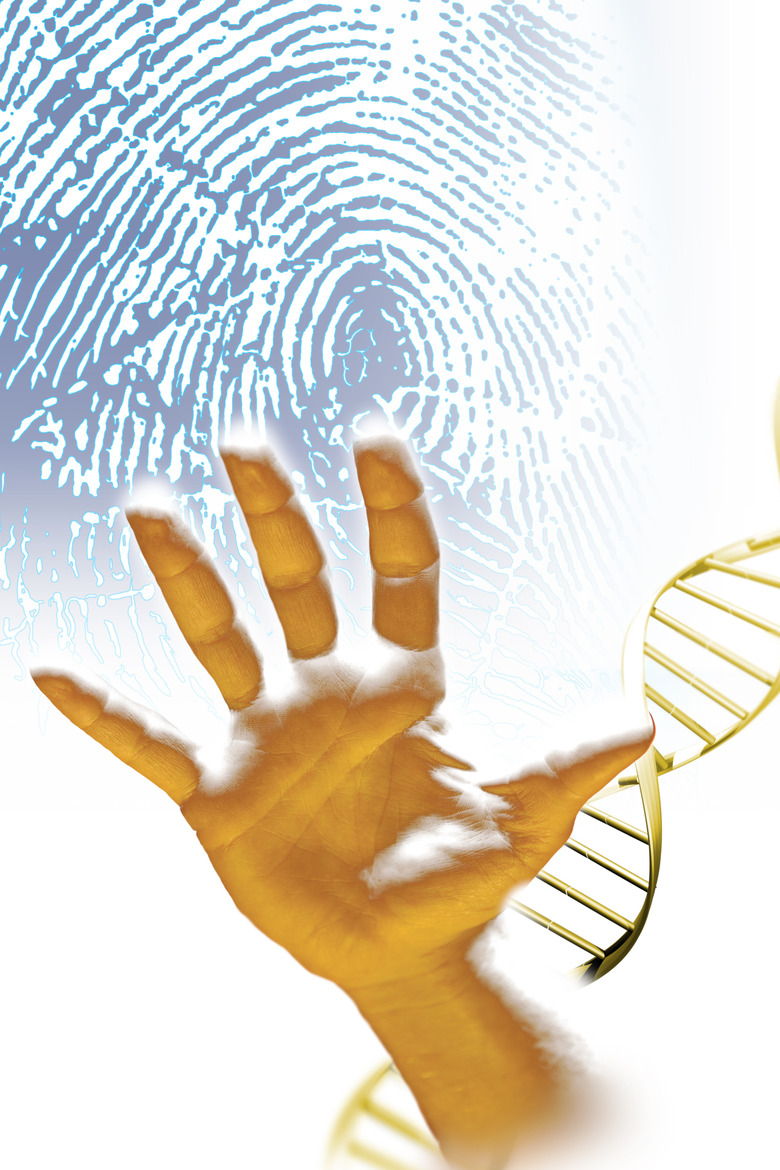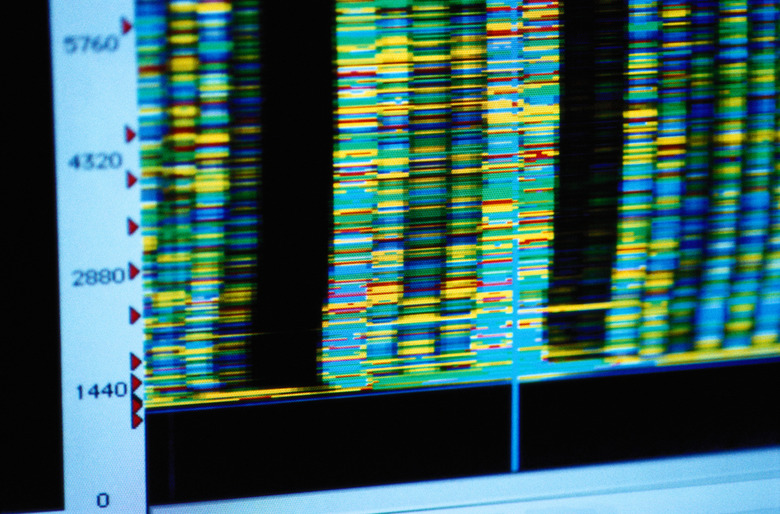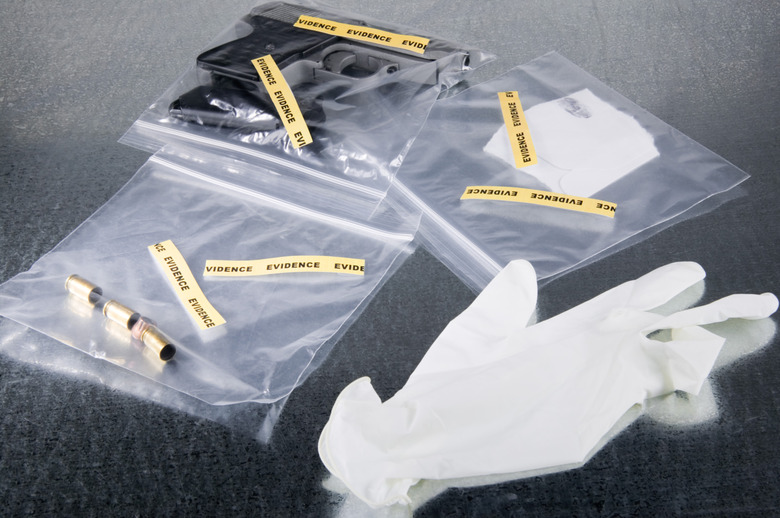What Are Specific Biotechnology Applications For DNA Fingerprinting?
DNA fingerprinting is based on the distribution of small repetitive elements called "minisatellites" that are contained in the cellular DNA, or deoxyribonucleic acid, of an organism. The technique is also known as DNA profiling, DNA typing or genetic fingerprinting. Since each cell of an organism contains the same DNA, the technique can be used to identify individuals. Several techniques are available to visualize the distribution pattern of mini-satellites with applications in genetic research, paternity testing, family genealogy, agriculture and forensic genetics for crime investigation.
Genetic Research
Genetic Research
In 1984, Alec Jeffreys, a British geneticist, identified the presence of minisatellites within the boundaries of genes. These minisatellites do not contribute to the functioning of genes and are distributed throughout the cellular DNA of an organism in a unique and inheritable pattern. The DNA fingerprint can be revealed by processing cells collected from individuals through one of several different techniques. These different techniques for genetic fingerprinting have been applied to identify and isolate disease genes, develop cures for diseased genes, and diagnose genetic diseases.
Paternity Testing
Paternity Testing
Testing paternity samples requires the collection of cells and comparison of DNA fingerprints from and between children and potential parents. Children will have a mix of DNA fingerprints inherited from each parent. When a child is conceived, each parent provides half of the genetic information. Most often the test is performed when the mother of the child is known but the father is in question. Since it is highly unlikely that any two people will have the same genetic fingerprint, paternity testing using DNA fingerprints is a reliable way to determine the parentage of a child.
Genetic Forensics
Genetic Forensics
A crime scene can contain biological samples, including blood, semen, saliva, skin, urine and hair, from perpetrators, victims and bystanders that can be processed to provide DNA fingerprints. The DNA fingerprints obtained are used to search existing databases for matches and to identify victims or suspects. The biological evidence and the DNA fingerprints can be used in trials to help prove guilt or innocence. The United States military has been storing DNA fingerprints of all military personnel for identification of casualties and those missing in action. The military has found the technology to be superior to identification methods used previously.
Plants and Animals
Plants and Animals
DNA fingerprinting of plants and animals is performed for food security, food safety, identification and parentage. In food animals, DNA fingerprinting can be used to trace meat to the source animal. The technique can be used to identify endangered and non-endangered fish species, while the sources of plants can be verified to prevent counterfeiting of seeds and stock. Pathogenic food organisms can be quickly identified by their DNA fingerprints, allowing doctors to provide timely, targeted treatment.
Cite This Article
MLA
, Dr. Garrett W. Lindemann . "What Are Specific Biotechnology Applications For DNA Fingerprinting?" sciencing.com, https://www.sciencing.com/specific-biotechnology-applications-dna-fingerprinting-23975/. 24 April 2017.
APA
, Dr. Garrett W. Lindemann . (2017, April 24). What Are Specific Biotechnology Applications For DNA Fingerprinting?. sciencing.com. Retrieved from https://www.sciencing.com/specific-biotechnology-applications-dna-fingerprinting-23975/
Chicago
, Dr. Garrett W. Lindemann . What Are Specific Biotechnology Applications For DNA Fingerprinting? last modified August 30, 2022. https://www.sciencing.com/specific-biotechnology-applications-dna-fingerprinting-23975/


